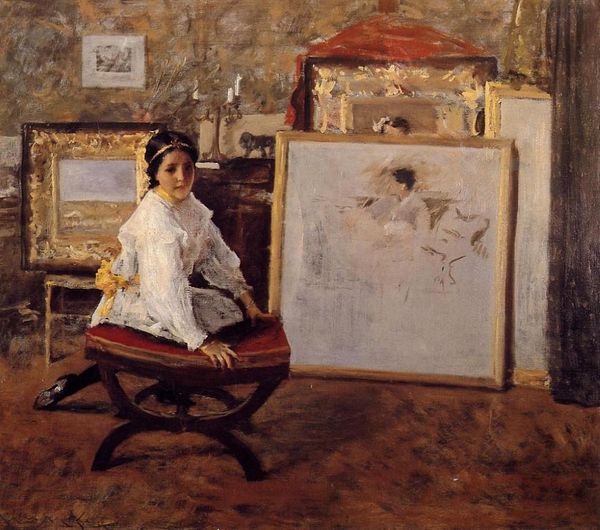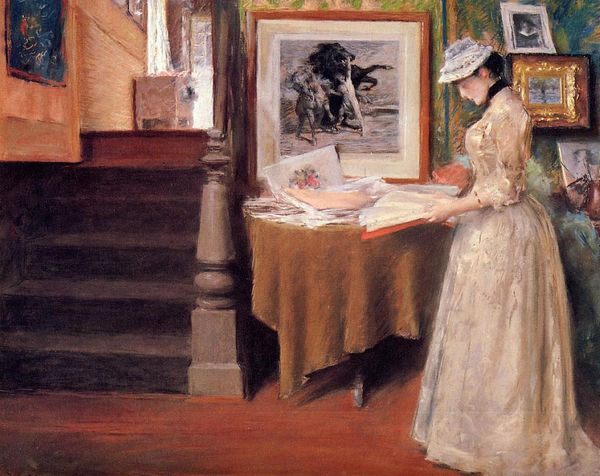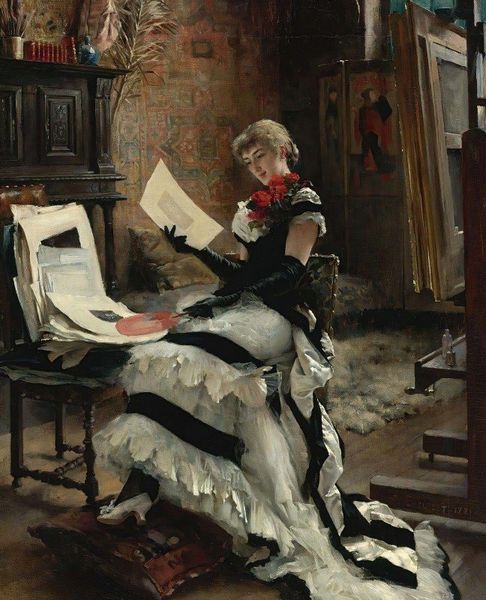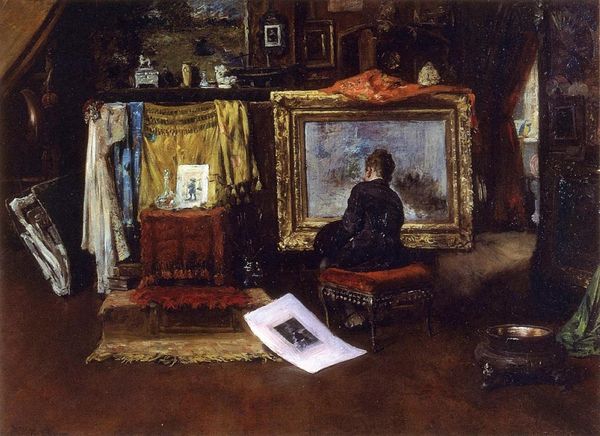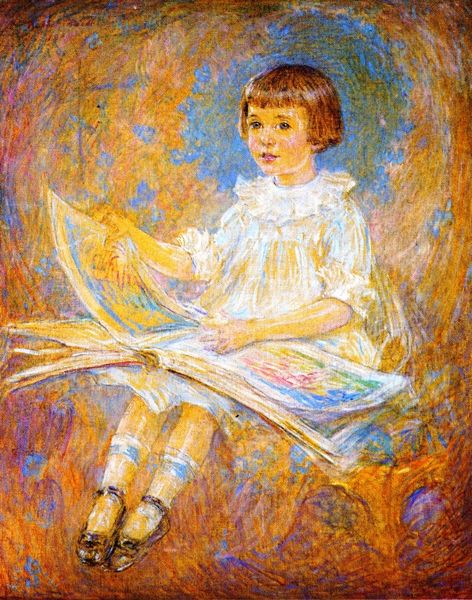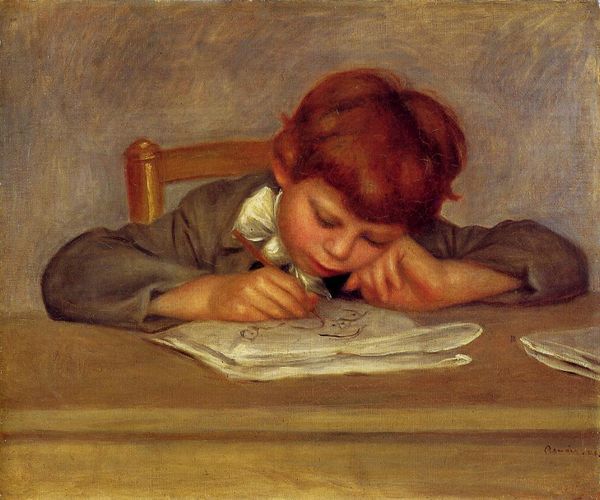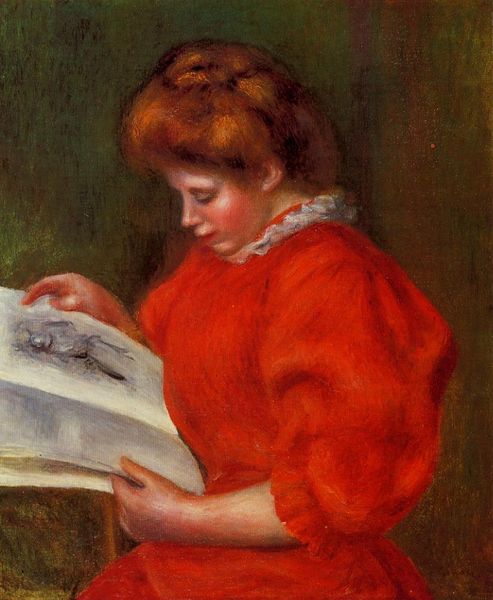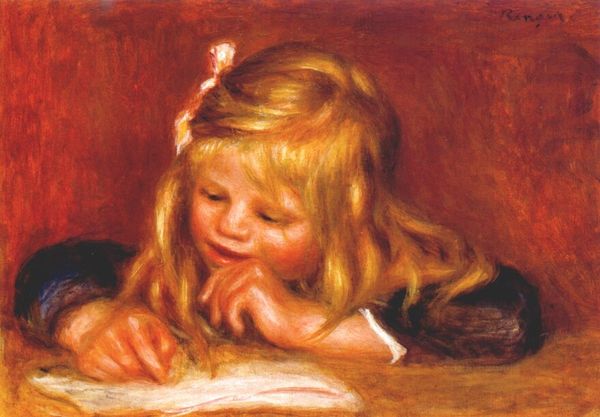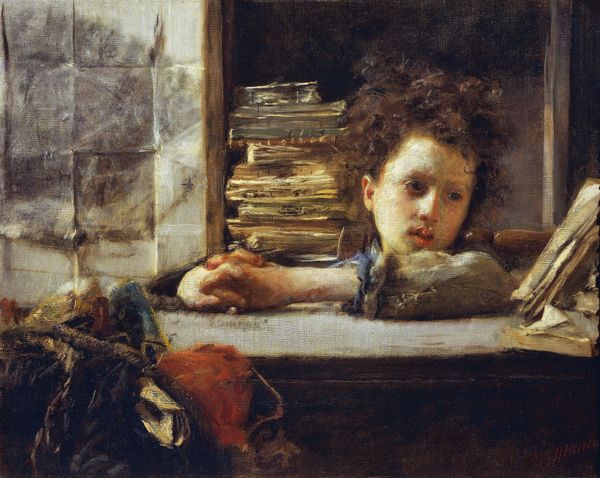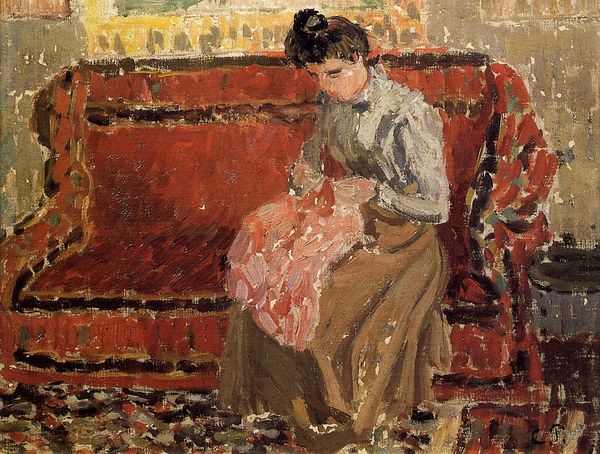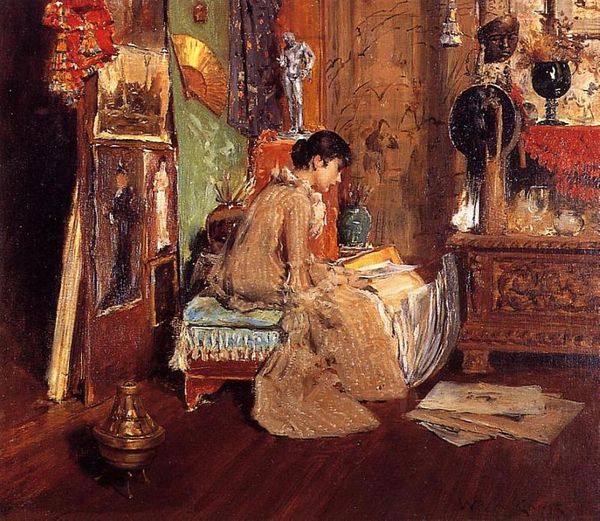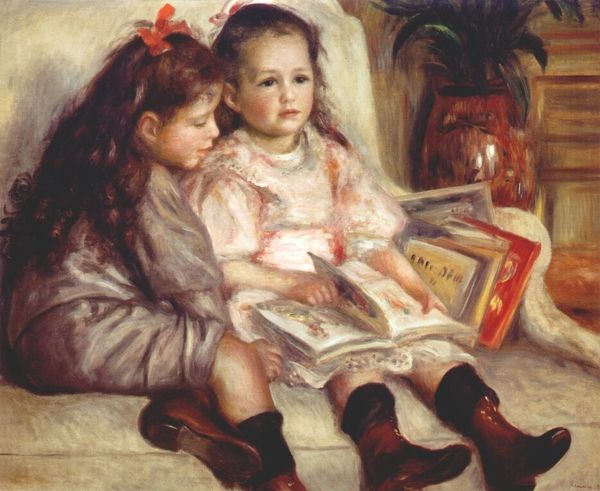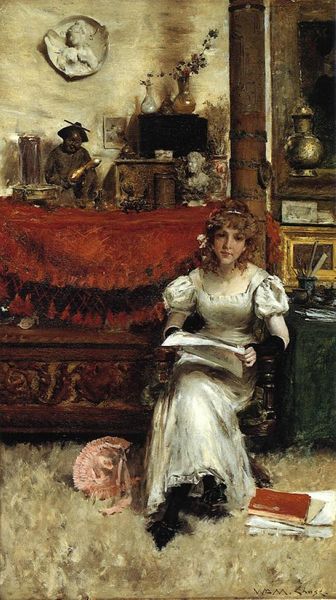
drawing, print, pencil, pastel
#
portrait
#
drawing
# print
#
impressionism
#
charcoal drawing
#
possibly oil pastel
#
oil painting
#
child
#
pencil
#
painterly
#
genre-painting
#
pastel
Dimensions: 55.88 x 44.45 cm
Copyright: Public domain
Editor: William Merritt Chase's "Child with Prints," from 1884... It's a flurry of pastels and charcoal, but I find the child’s serious expression strangely compelling amidst the chaos. How do you see this work? Curator: It's fascinating how Chase captures this seemingly private moment of childhood engagement, but within a highly constructed, even performative space. Note the artistic mess – is it genuine, or is Chase presenting us with a deliberately "artistic" vision of childhood within an art-filled environment? Consider also, whose child is this and what access did they have? How is Chase constructing childhood in relation to access and artistic labor? Editor: That's interesting – almost as if the prints themselves are props, turning the child into a symbol of artistic appreciation? Curator: Exactly. This ties into the rise of art collecting and a growing art market during the late 19th century. Child becomes intertwined with art in ways that signal wealth, taste and privilege. Chase presents us with an image that is both intimate and highly aware of its own display. Editor: So, it's not just a portrait; it's also a statement about the cultural value of art and how children were seen in relation to that value at the time? Curator: Precisely. The art is about shaping the child as a symbol, demonstrating how visual culture became crucial to defining and projecting social status. Do you find anything subversive about this work? Editor: Subversive? Not exactly. But seeing how strategically everything is arranged gives me a different perspective on the seemingly candid nature of impressionist portraits. It all feels staged. Curator: Agreed. And by recognizing that staged quality, we can begin to understand the complex ways that art reflects and reinforces social and cultural values. Editor: That's a helpful analysis! Thanks, I'll look at art, particularly portraits of children, very differently now.
Comments
No comments
Be the first to comment and join the conversation on the ultimate creative platform.
